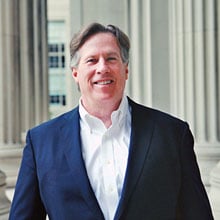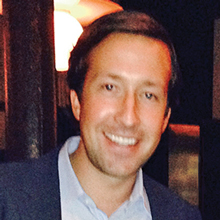Shaping the Built World
The buildings around us, where we dwell, work, shop, learn, and play, have a profound effect on our lives, our society, and our economy. And graduates of the MIT Center for Real Estate (CRE) master’s program are having a profound effect on how those buildings are developed.

Across the United States and internationally, CRE alumni are stressing efficiency and economy as well as social and aesthetic appeal to create new building types that win both political and community approval. They are bringing greater transparency and accessibility to real estate finance. They are applying new development paradigms in emerging nations and aging cities. And very often, they are working with a sense of higher purpose.
“Having a positive impact on the built environment is what we’re all about,” explains David Geltner, a professor of real estate finance and engineering systems. He notes that the center, founded in 1983 as part of MIT’s School of Architecture and Planning, established the first one-year master’s program in real estate development. Today CRE also offers professional development classes. Many other graduate real estate programs are in business schools, which emphasize investment and finance.
“We certainly appreciate those aspects,” says Geltner, author of Commercial Real Estate: Analysis and Investments, the most widely cited textbook on real estate investment. “But we also speak to how cash flow represents a physical modification to the social environment. Our students are extremely entrepreneurial, and many are very successful, but they generally have an orientation toward real estate as a physical product that can make the world a better place.”
Patrick Kennedy, SM ’86, for example, is pioneering the construction in San Francisco of micro-unit buildings, which can house two people in as little as 300 efficient square feet. “That’s the unit of the future, and I think it can be made more of a modular manufactured product,” says Kennedy. “I want to put San Francisco in reach of middle-class people, and the only way is innovation in housing.”
Farther north, Lisa Picard, SM ’95, heads Skanska Commercial Development’s Seattle office, where she aims to “not only create value from an investment perspective but also from a community perspective.”
Catherine Polleys, SM ’96, and Mark Roberts, SM ’94, worked through a nonprofit industry organization to develop an index that tracks the performance of real estate investments and, by extension, the health of the U.S. real estate market. Their benchmark is widely used by investors, regulators, and researchers worldwide, and it has sparked similar efforts in other regions.
Real estate development involves dozens of stakeholders and an especially broad range of disciplines, including architecture, law, politics, finance, planning, and social sciences, says CRE director Albert Saiz, a professor of urban economics and real estate. That’s why, he says, “we want our graduates to be Renaissance men and women who understand the market from every dimension.”
That’s reflected in the collaborative intellectual milieu at CRE, which annually enrolls some 25 to 30 master’s students. Typically half come from outside the United States, and virtually all have hands-on experience. “We have property portfolio managers, high-end leasing agents, people who’ve worked in construction and land use and mortgage derivatives,” says Saiz. “They talk to one another in a focused, productive, noncompetitive way and gain an understanding of the reality of real estate.”
Or as the center’s advisory board chair, Tod McGrath, puts it, “You get the sort of education you’d be lucky to get during decades in the real world, and you get it in eight months.”
McGrath teaches the popular Real Estate Ventures class, drawing on his wide network of top-tier attorneys and other professionals. A highlight, says Michael DiMinico, SM ’12, director at Boston’s King Street Properties, is an exercise that divides the class into two groups, each representing a party to a sample contract.
“You negotiate in class, before a panel of celebrity judges from across the real estate industry,” recalls DiMinico. “Afterwards everyone goes to the Muddy Charles and the judges share feedback with the students. It’s an active learning process and great for networking.”
DiMinico is co-president of the CRE alumni association, which Saiz cites as a leading strength of the program. In addition to providing outstanding networking opportunities and financial support—including more than $1.4 million for new facilities in Building 9—the association is making CRE a global knowledge hub through events and programs. One example is The Case, a six-year-old development proposal competition for graduate students, which had to be capped at 42 teams from six countries in 2014.
Another is the Real Disruption panel discussion series, which showcases startups and innovators, drawing hundreds of attendees with technology-related topics like novel tools for leasing transactions, crowdfunding, and big data’s impact on commercial real estate. “Real Disruption grew out of alumni conversations about crowdfunding,” says founder Steve Weikal, SM ’08, vice president at Now Communities, which develops “pocket neighborhoods” of smaller, sustainable homes. “I started looking around and uncovered an explosion of new real estate ventures.”
McGrath says these events boost industry engagement, which he calls “key for our next 10 years,” with dividends for students, curriculum, and research.
And cultivating a sense of purpose will remain a priority in those years, Saiz adds. “Our students want to solve problems, do things, collaborate—they feel they can learn from everyone,” he says. “I’m very proud of that and want to keep fostering that culture and make it endure.”
Alumni Innovators in Real Estate

John McDonald, SM ’13
Founder of UrbanRedux, an investor in multi-family and single-family homes in America’s secondary cities, with an initial focus on Milwaukee and Detroit. The company often rents single-family homes to area residents who lost their homes (and credit ratings) to foreclosure. In the future, the most creditworthy tenants will be offered a rent-to-own option.
After almost 30 years on Wall Street, McDonald got interested in real estate as a field “where life experience is valued, and age is respected.”
While McDonald says his technical and theoretical studies at the CRE were important, he also cites “a theme that came up again and again—that the mission of MIT is to make the world a better place.” He adds, “That governs our business model. Yes, we want to make money, but by improving the built environment in urban centers. At this stage of my life I want people to say, ‘That made a difference—that helped.’”

Lisa Picard, SM ’95, MCP ’95
Executive vice president and regional manager at Skanska Commercial Development in Seattle, where she oversees large developments, including Seattle’s Stone34 building, which Skanska opened in 2013 and sold in 2014.
At Stone34, Skanska wanted to qualify for a new Seattle program offering zoning incentives for buildings meeting stringent environmental standards. But Skanska also needed the building to provide market-rate pricing for the lead tenant, Brooks Running.
“That’s what makes our work interesting—solving real problems and challenges facing our cities,” says Picard, who notes that developers commonly manage risk by repeating the formula of previous projects. “But projecting prior assumptions into the future without question is probably one of the riskiest things you can do.”
She credits the CRE with exposing her to “people from incredibly diverse backgrounds in a collaborative, creative, problem-solving environment,” adding, “This prepared me to be conversant with CEOs and CFOs of growing companies and to create value for each stakeholder.”

Zac Shore, SM ’14
Project manager of Panoramic Interests in Berkeley, California, where he is overseeing build-out of a San Francisco high-rise with 160 micro-unit apartments and contributing to other projects alongside company founder Patrick Kennedy, SM ’85.
“I came from a construction background as a general contractor and was always a little envious of the development side of the business,” says Shore. “I like building stuff but wanted to be more like a movie producer.”
Life at a small firm is fun, he says, because “I get to work on every phase of a project—finance, construction, permits, meeting with the city and clients. I love working on something different every day.”
What Shore especially appreciated about his CRE experience was his classmates: “They ranged in age from 26 to 62, from all different walks of life, and their experience added tremendously to the classroom conversations. We all learned so much.”

Zhizhong Yang, SM ’94, SM ’94
Senior managing director and chair and CEO of the China Region at Nomura Group, where he continues an investment banking career that has spanned more than 20 years and included over $100 billion in cross-border M&A, financing, and principal investment transactions.
When Yang arrived at MIT, he says, “China was just beginning to see accelerated development and the emergence of a private-sector development industry. Close partnership between the public and private sectors was inevitable, and the CRE’s course offerings prepared me well for the opportunities and challenges.”
Yang notes that his private and state-owned clients are growing increasingly sophisticated, embracing new technologies and environmentally friendly development ideas while employing a wide range of financing instruments. “The analytical tools I acquired at MIT are relevant in all the transactions I have been involved in,” he says.
Keep Reading
Most Popular
Large language models can do jaw-dropping things. But nobody knows exactly why.
And that's a problem. Figuring it out is one of the biggest scientific puzzles of our time and a crucial step towards controlling more powerful future models.
How scientists traced a mysterious covid case back to six toilets
When wastewater surveillance turns into a hunt for a single infected individual, the ethics get tricky.
The problem with plug-in hybrids? Their drivers.
Plug-in hybrids are often sold as a transition to EVs, but new data from Europe shows we’re still underestimating the emissions they produce.
Stay connected
Get the latest updates from
MIT Technology Review
Discover special offers, top stories, upcoming events, and more.